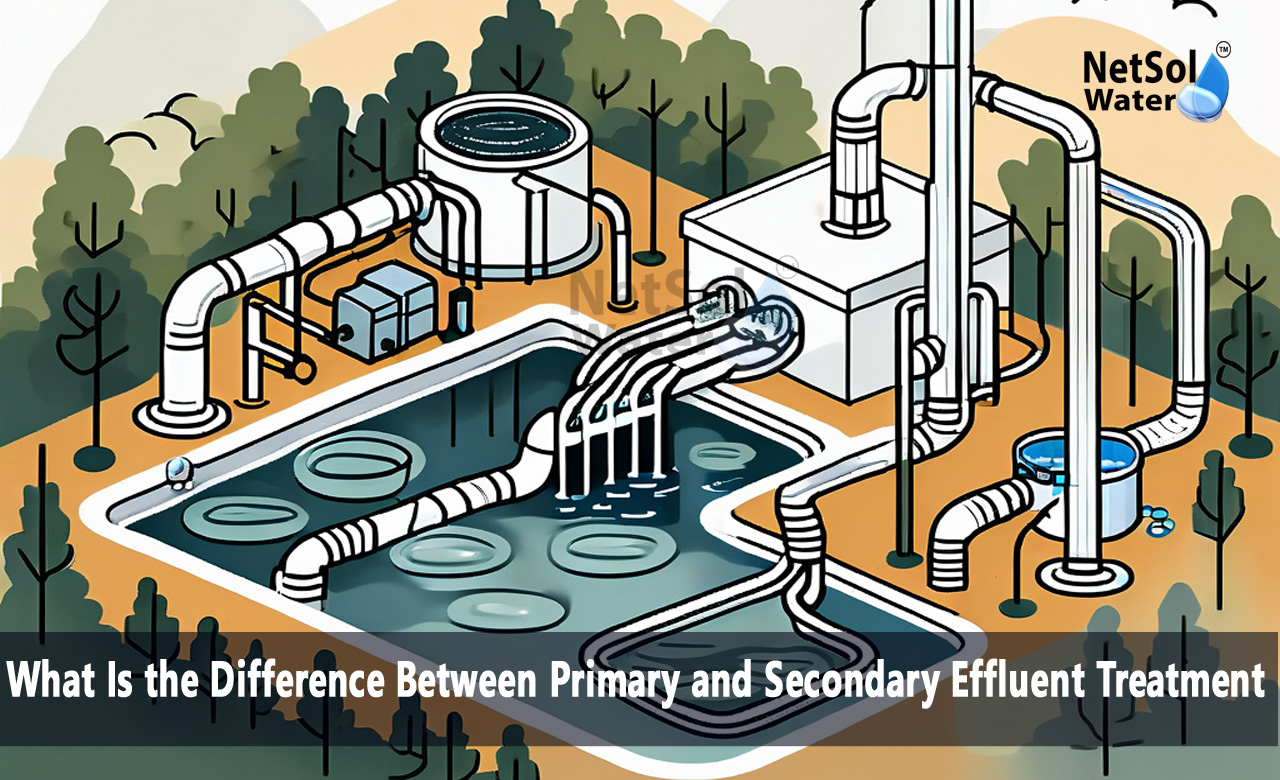What Is the Difference Between Primary and Secondary Effluent Treatment?
Wastewater leaves homes and businesses every day. It needs safe cleaning before it returns to nature. Knowing the difference between primary and secondary effluent treatment helps you plan the right system. Primary treatment comes first. It removes large solids and particles. Secondary treatment follows. It breaks down organic matter with microbes. Both steps work together. They aim to meet health and safety standards. Netsol Water stands as a leading effluent treatment plant manufacturer in each step. In this blog we explain each stage showing why each stage matters. We guide you to pick the best process for your needs.
Primary Effluent Treatment
Primary treatment forms the first stage in wastewater cleaning. It has a simple goal. It removes solids and heavy particles from water before deeper cleaning. Let us have a look at some key processes.
Screening
Screening stops large debris at the inlet. Water flows through a bar screen. It traps sticks cloth and plastic. Workers clear the screen by hand or with machines. This protects pumps and pipes from damage.
Grit Removal
Grit removal follows screening. It slows water flow to let sand and gravel settle. The heavier grit sinks to the bottom of a tank. The grit leaves the tank by gravity. This step prevents wear on pumps and valves.
Sedimentation
Sedimentation removes fine solids next. The water sits in a clarifier tank. Particles settle to the bottom as sludge. We scrape the sludge off the floor of the tank. The clear water moves on to the next stage. This process cuts down more than half of the solids in the flow.
Secondary Effluent Treatment
Secondary effluent treatment takes on dissolved organic matter. It uses living microbes to break down pollutants. Let us have a look at some key methods.
Activated Sludge Process
The activated sludge process mixes wastewater with bacteria. We keep the mix in an aeration tank. Air pumps add oxygen for the microbes. The bacteria feed on the organics and form flocs. We send this mix to a settling tank. The flocs settle out as biomass. The clear water leaves the tank. We return some biomass to keep the bacteria count high.
Trickling Filters
Trickling filters use a fixed bed of rock or plastic media. We spray wastewater over the bed. A biological film grows on the media. The film consumes the organic matter. Clean water drips to a collection tank. We let the bed rest to prevent clogging.
Moving Bed Biofilm Reactors
In a moving bed biofilm reactor we float small carrier pieces in water. The carriers hold biofilm on their surface. We air lift the carriers to mix them with the wastewater. The biofilm eats the pollutants. We separate the carriers in a settling zone. The clean water moves on to final polishing.
Difference Between Primary and Secondary Effluent Treatment
Knowing the difference between primary and secondary effluent treatment guides design and cost decisions. Each stage has its own role. Let us have a look at some key differences.
Treatment Goals
Primary treatment focuses on removing suspended solids and heavy particles. Secondary treatment aims to cut down dissolved organics and reduce biochemical oxygen demand.
Mechanisms
Primary treatment relies on physical processes. It uses screens grit chambers and sedimentation tanks. Secondary treatment uses biological processes. It uses bacteria in aerated tanks or on media surfaces.
Efficiency
Primary treatment removes about 50 to 60 per cent of solids. It does not remove dissolved chemicals. Secondary treatment cuts up to 85 per cent of organic pollutants. It also lowers suspended solids further.
Cost and Maintenance
Primary treatment costs less to build and run. It needs routine cleaning of screens and tanks. Secondary treatment costs more in power for aeration or pumping. It needs careful control of microbial health and periodic sludge handling.
Conclusion
Understanding the difference between primary and secondary effluent treatment helps you choose the right steps for your plant. Netsol Water leads the industry in both primary and secondary systems. We customize solutions to your needs. We use proven methods and simple design for lasting results. If you want to learn more about the difference between primary and secondary effluent treatment please get in touch with our experts. Request a consultation today to discuss your project.
Contact Netsol Water at:
Phone: +91-9650608473, Email: enquiry@netsolwater.com



